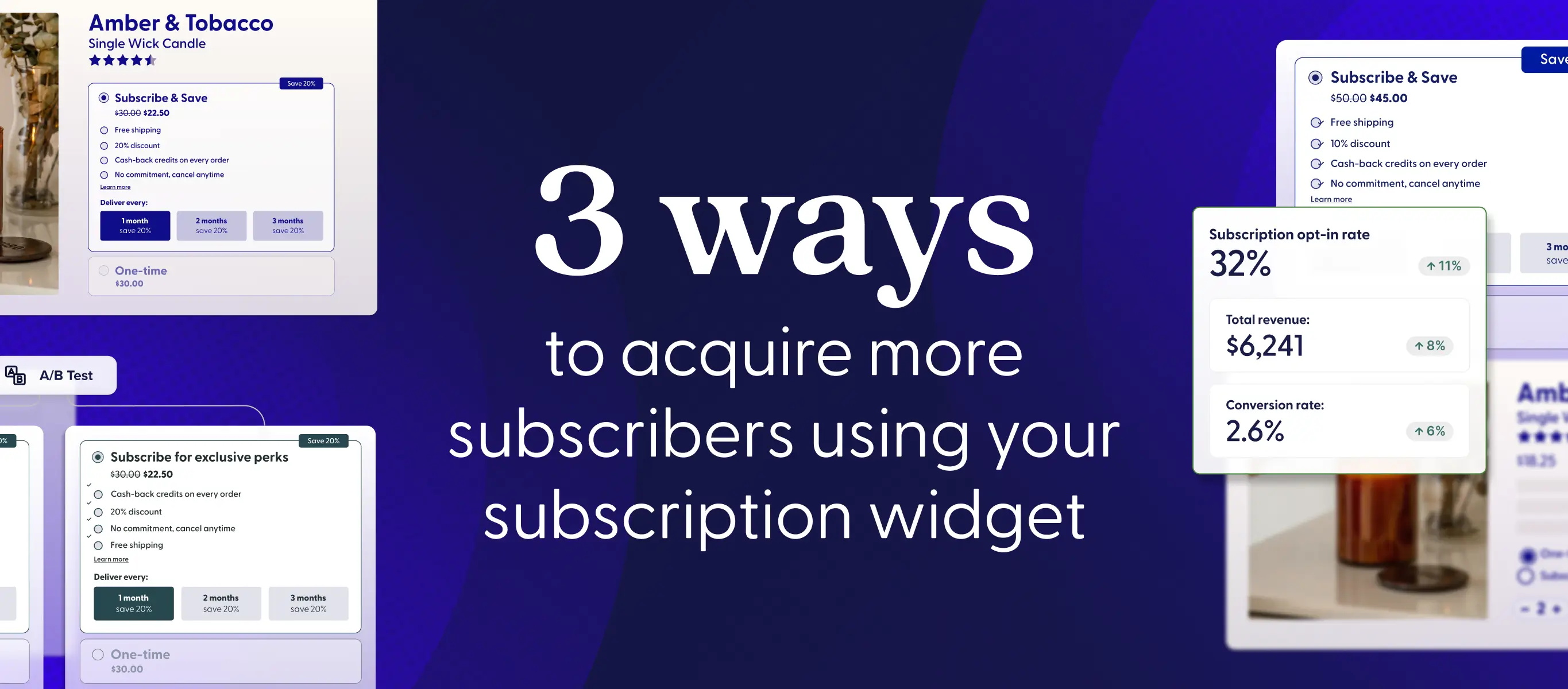One way to stay ahead of the competition in ecommerce is by utilizing low-code development options. They can streamline software development processes—since they require little to no coding—leading to faster and more efficient adoption.
In this post, we’ll cover the advantages of low-code development options in ecommerce, and how they can empower merchants to create powerful solutions with minimal coding knowledge.
Key takeaways
- By empowering users and allowing for easier collaboration, low-code platforms make development faster and seamless.
- Merchants can utilize no-code or low-code application development to complete projects without prior knowledge of coding.
- The Recharge API and customer portal offer low-code options to merchants looking to customize their portal and subscription offerings.
What are low-code developments?
First, let’s cover what low-code means. It’s a software development that differs from traditional development because it requires little to no coding to build processes or applications. Instead of using these complex languages which only your developer might know, they use visual interfaces. In this way, low-code platforms are user-friendly, allowing drag-and-drop capabilities and interfaces with basic logic.
Why is low-code development important?
First of all, anyone with little to no coding knowledge can usually utilize and intuit a low-code platform. This allows for a more collaborative and inclusive environment, where business users and professional developers can work together seamlessly on projects.
It also enables faster and more efficient application creation. A low-code development platform simplifies the software development process by offering a user-friendly, drag-and-drop interface that minimizes the need for traditional coding knowledge. This approach helps to expedite development, allowing for faster completion of projects.
4 advantages of a low-code development platform for ecommerce merchants
Low-code application platforms empower users and make collaboration easier. Below, we’ll cover a few of the advantages that the right low-code platform can offer your online business.
1. Empowers users
One of the standout advantages of low-code development platforms is their ability to empower business users. Traditionally, software development was the domain of professional developers. However, low-code tools have made the process more equal, enabling regular users to take an active role in application development.
These platforms are designed to be accessible to individuals with limited coding knowledge, allowing them to design and create applications independently. This empowerment translates into faster time-to-market for new features, increased agility, and reduced reliance on IT or developer departments for every software-related request.
2. Easier collaboration
Low-code development is not about replacing professional developers, but about enhancing collaboration between business users and IT teams. Users can use low-code platforms to prototype and build applications quickly, then hand off the more complex coding tasks to professional developers for fine-tuning. This collaboration fosters an environment where each group can contribute their unique expertise, leading to a better result overall.
3. Faster development
Low-code platforms are known for their rapid application development capabilities. With an easy-to-use interface, pre-built templates, and a library of reusable components, applications can be developed in a fraction of the time it takes with traditional development methods. This speed is a significant advantage in the ever-changing world of ecommerce, where rapid adaptation to market changes is essential.
4. No-code platforms offer additional simplicity
In addition to low-code development, no-code platforms are available for those who have even less coding knowledge. No-code platforms take simplicity to the next level by allowing users to build applications without any coding or scripting. These platforms are ideal for creating straightforward applications, such as data collection forms or basic workflow automations.
Low-code examples
To understand a couple of low-code tools and platforms and their business impact, let’s explore two examples that Recharge offers: the customer portal and the Recharge API.
1. Recharge customer portal
With the Recharge customer portal, merchants can take advantage of no-code customizations that help them streamline their development processes and increase retention. The portal is a ready-to-use solution, meaning you have everything your business needs to quickly launch a beautiful customer portal.
Merchants who are on the Pro and Custom plans with Recharge have access to additional features that allow for both low-code and complete customization of the portal—giving brands the freedom to create a portal that works for their customer base and specific needs.
2. Recharge API
Another example of low-code application development is the Recharge API, which allows merchants to customize how their subscriptions operate. Recharge provides a RESTful API and event-driven webhooks that allow for complex integration with partners. These webhooks are a mechanism for reacting to specified events that are triggered in the system, such as checkout completion, customer activation, or subscription cancellations.
Getting started today with a low-code platform
Low-code and no-code development options have revolutionized the ecommerce landscape, providing businesses with the tools to develop applications quickly and efficiently.
The advantages of low-code development platforms include empowering users, enabling collaboration between business and IT, and accelerating application development. When implemented effectively, these platforms can help ecommerce businesses stay competitive in a rapidly changing environment.
Consider adopting a low-code or no-code development approach that aligns with your specific needs and resources. By doing so, you can harness the power of these innovative tools to drive your business forward in this digital age.
Sources
[1] Customer portal (Recharge)
[2] Merchant inspiration series: Customer portals (Recharge)
[3] Recharge API (Recharge Support)



